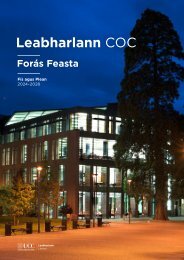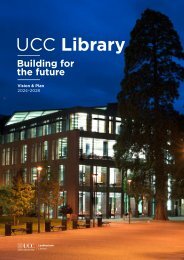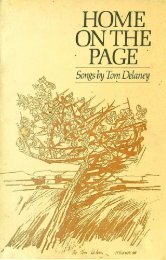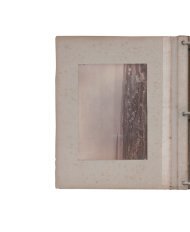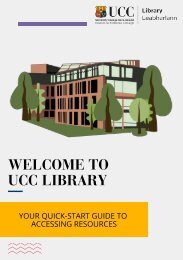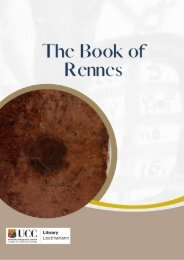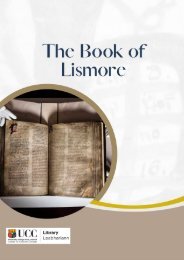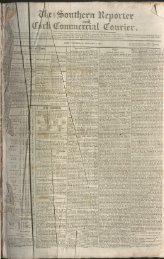Lead Toxicity in Mute Swans
LEAD TOXICITY IN MUTE SWANS Cygnus olor (Gmelin). By JOHN O'HALLORAN A thesis submitted to the National University of Ireland in candidature for the degree of Doctor of Philosophy September 1987
LEAD TOXICITY IN MUTE SWANS
Cygnus olor (Gmelin).
By
JOHN O'HALLORAN
A thesis submitted to the National University of Ireland
in candidature for the degree of Doctor of Philosophy
September 1987
Create successful ePaper yourself
Turn your PDF publications into a flip-book with our unique Google optimized e-Paper software.
<strong>in</strong>hibit<strong>in</strong>g the synthesis of haemoglob<strong>in</strong> and caus<strong>in</strong>g raised<br />
protoporphyr<strong>in</strong> IX values (Lee, 1981).<br />
However, <strong>in</strong> common with other<br />
studies on toxic metals, understand<strong>in</strong>g the effects of lead depends on a<br />
thorough knowledge of the swans' normal physiology and biochemistry.<br />
Some workers, for example Simpson et al., (1979), have reported<br />
haemoglob<strong>in</strong> values for <strong>Mute</strong> swans and Janssen et al., (1986) have<br />
exam<strong>in</strong>ed blood chemistry <strong>in</strong> California condors [Gymnogyps californicus<br />
(Shaw)] suffer<strong>in</strong>g from lead poison<strong>in</strong>g.<br />
In general, however, few<br />
reference values for blood parameters <strong>in</strong> birds are available.<br />
Such<br />
knowledge of 'normal' haematological, biochemical and physiological<br />
values and function is necessary if we wish to make an attempt to<br />
assess the importance of an effect of a toxic metal such as lead on<br />
<strong>Mute</strong> swans.<br />
Thus, environmental and/or ecological assessments cannot<br />
be made without a good knowledge of biochemical and physiological<br />
factors.<br />
Chapter four reports haematological and biochemical reference<br />
values for <strong>Mute</strong> swans and compares these values with those of six swans<br />
that died from acute lead poison<strong>in</strong>g.<br />
Chapter five reports on tissue and blood lead levels of <strong>Mute</strong> swans<br />
that were <strong>in</strong>volved <strong>in</strong> collisions. The possible role of elevated lead<br />
<strong>in</strong> caus<strong>in</strong>g these collisions is <strong>in</strong>vestigated.<br />
REFERENCES<br />
Anders, E., Diet, D.D., Bagnell, C.R., Gaynor, J., Krigman, M.R., Ross,<br />
D.W., Leander, J.D. and Mushak, D. (1982).<br />
Morphological,<br />
pharmocok<strong>in</strong>etic and hematological studies of lead exposed pigeons.<br />
Environmental Research. 28: 344-363.<br />
- 4 -




